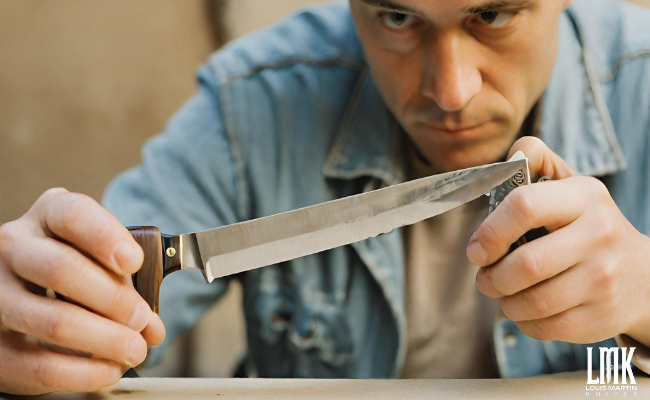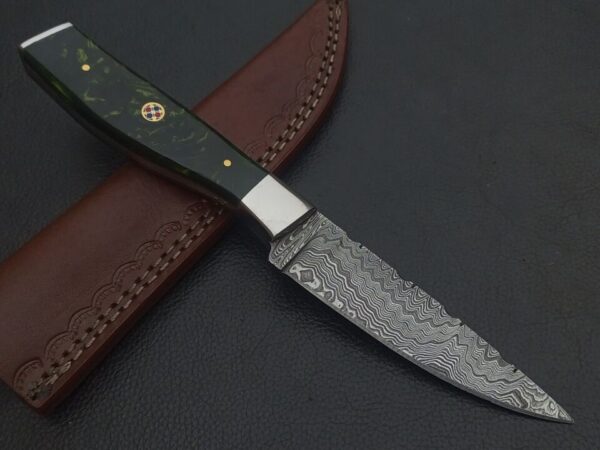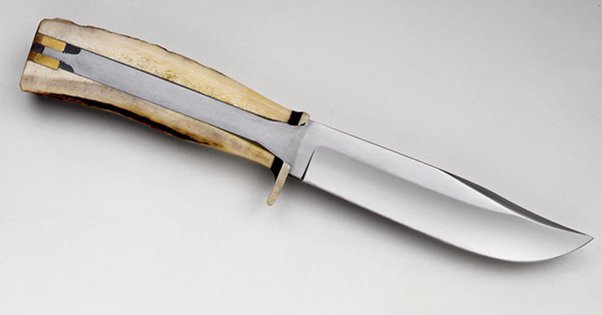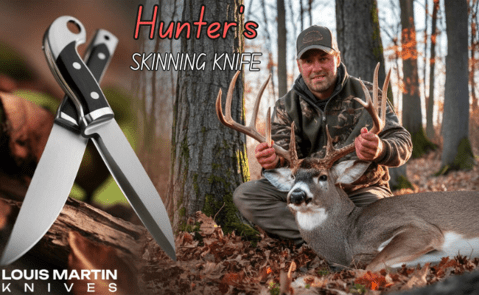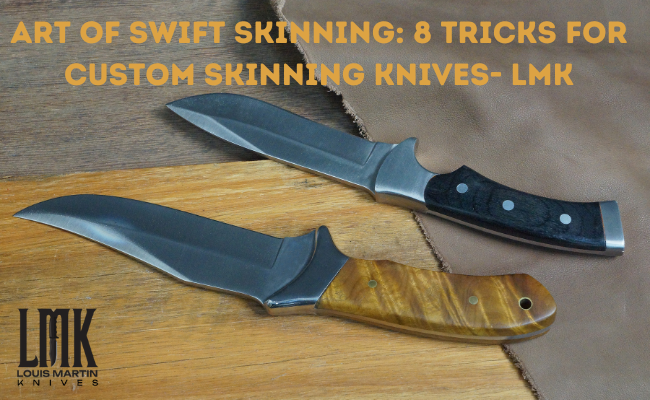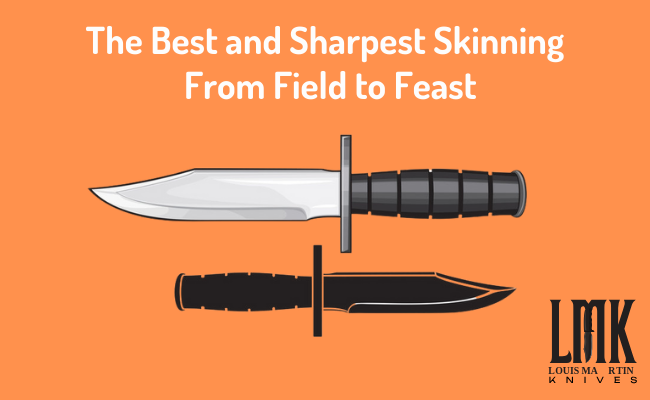Having the proper tools can make a big difference in the fields of hunting, fishing, and even cooking. One of these basic yet necessary instruments is the skinning knife. But not every skinning knife is made equally. We’ll examine the key elements of identifying a superb skinning knife design in this article. Knowing these essential Custom knife makers characteristics will guarantee that you purchase a tool that improves both productivity and safety in your chores, regardless of your level of experience as a cook or outdoorsman.
Recognizing the Objective
The primary purpose of a skinning knife is to quickly and effectively remove an animal’s or fish’s skin. It is a basic yet essential tool. But a well-made skinning knife is more important than just a practical tool. Not only does an excellent design guarantee quick and accurate skinning, but it also reduces the possibility of mishaps and user fatigue with extended use.
Important Elements of Blade Design to Consider
Since the blade is the essential component of any knife, selecting the right material for a skinning knife is crucial. For their longevity and ability to maintain their edge, premium carbon steel or stainless steel are frequently chosen. Think about the shape of the blade as well; for duties involving skinning, a drop-point or curved blade works best because it minimizes the chance of puncturing internal organs and allows for precision cutting.
Handle Design
Since the handle is where the user’s hand and the knife contact, ergonomics are quite important. Select a handle that provides a stable and comfortable grip; this is crucial when using the tool for extended periods in difficult circumstances. Rubber and textured synthetic materials offer superior traction and are impervious to wetness and slippage…
Tang
The term “he tang” is used to describe the part of a blade that extends into the handle. A full tang design, where the blade extends the full length of the handle, offers superior strength and durability compared to partial tang knives. This ensures that the knife can withstand the rigors of heavy-duty skinning tasks without risk of breakage.
Blade Length and Thickness
The ideal blade length and thickness depend on the intended use of the knife. For skinning tasks, a blade length between 3 to 5 inches is typically preferred, offering a balance between maneuverability and cutting power. Similarly, a thin, flexible blade is advantageous for precise cuts and navigating around bones and joints.
Some of the The Best Design Skinning Knives
Durability and Maintenance of these knives
Rust Resistance
Knives are regularly exposed to moisture during outdoor activities, which raises the possibility of rust and corrosion. Choose knives with superior rust resistance, such as those made of treated carbon steel or stainless steel. The longevity of the blade can be further extended by routine maintenance, such as cleaning and oiling it after each usage.
Ease of Maintenance
A well-designed skinning knife should be easy to clean and maintain. Look for features such as a smooth, non-porous blade surface and removable handle scales for thorough cleaning. Additionally, consider knives with minimal crevices or intricate designs that can trap debris and make cleaning more challenging.
Safety Considerations
Finger Guards and Blade Locks
Safety should always be a top priority when handling knives, especially during skinning tasks where precision cuts are required. Knives with built-in finger guards help prevent accidental slips that could result in injury. Similarly, a secure blade lock mechanism ensures that the blade remains in place during use, minimizing the risk of unexpected closures or accidents.
Performance in Different Environments
Flexibility in Adverse Environments
The context in which a skinning knife is used can affect how well it performs. When choosing a knife, take into account variables like terrain, temperature, and humidity. For outdoor use , knives with sturdy construction and corrosion-resistant materials are more appropriate since they offer reliable performance under varied circumstances.
Reviews and Brand Reputation
Investigating Reputable Brands
With so many types and brands on the market, it’s critical to investigate reliable producers. Seek out companies that have a solid track record of manufacturing high-quality knives and that are supported by encouraging customer feedback. Online networks and forums devoted to hunting and other outdoor pursuits are excellent sources of advice and recommendations from other enthusiasts.
Conclusion
In conclusion, spotting a superior skinning knife design requires careful consideration of various factors, from blade materials and handle ergonomics to safety features and brand reputation. By prioritizing quality and functionality, you can invest in a tool that not only enhances your skinning tasks but also lasts for years to come. So, before embarking on your next hunting or fishing expedition, equip yourself with a top-notch skinning knife that’s up to the task. Your hands—and your catch—will thank you for it.
FAQs about Skinning Knives
How do skinning knives work?
Skinning knives are made with a curved, sharp blade that makes it easy and precise to remove the skin from fish or animals. Users can separate the skin from the underlying meat by making precise, smooth cuts along the animal’s body with the curved blade. Skinning knives efficiently remove skin from animals while causing the least amount of harm to the underlying meat by exerting pressure and moving the blade following the inherent curves of the animal.
What knife is used for skinning?
A skinning knife is specifically designed for the task of removing the skin from animals or fish. It typically features a sharp, curved blade with a pointed tip, allowing for precise cuts and maneuverability. The blade may vary in length depending on the intended use, but it is generally between 3 to 5 inches long. Additionally, skinning knives often have ergonomic handles that provide a comfortable and secure grip, enhancing control and reducing hand fatigue during prolonged use.
How long is a skinning knife?
Skinning knives are available in a range of lengths to suit a variety of uses and tastes. A skinning knife’s blade, however, usually has a length of 3 to 5 inches. This size strikes a compromise between cutting power and mobility, enabling users to successfully remove fish or mammal skin while making accurate cuts. While shorter blades are more nimble and better suited for intricate tasks, longer blades might provide greater leverage and cutting surface area.
What tool is used for skinning?
A skinning knife is the main tool used for skinning. Skinning knives have a sharp, curved blade that makes precise cuts and mobility easier. They are made especially for the task of removing skin from fish or animals. Some hunters and butchers use specialized tools like gambrels or skinning hooks in addition to skinning knives to help with the skinning process. While the skinning knife is being used to remove the skin, these instruments aid in stabilizing the animal and offer leverage.
